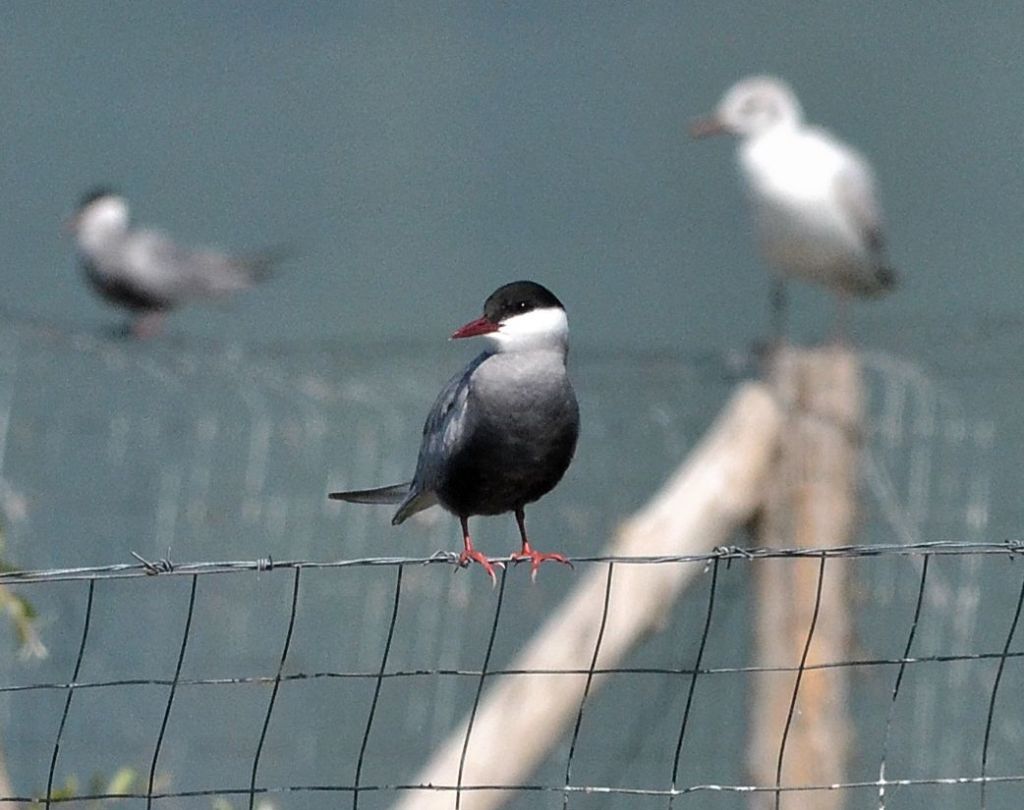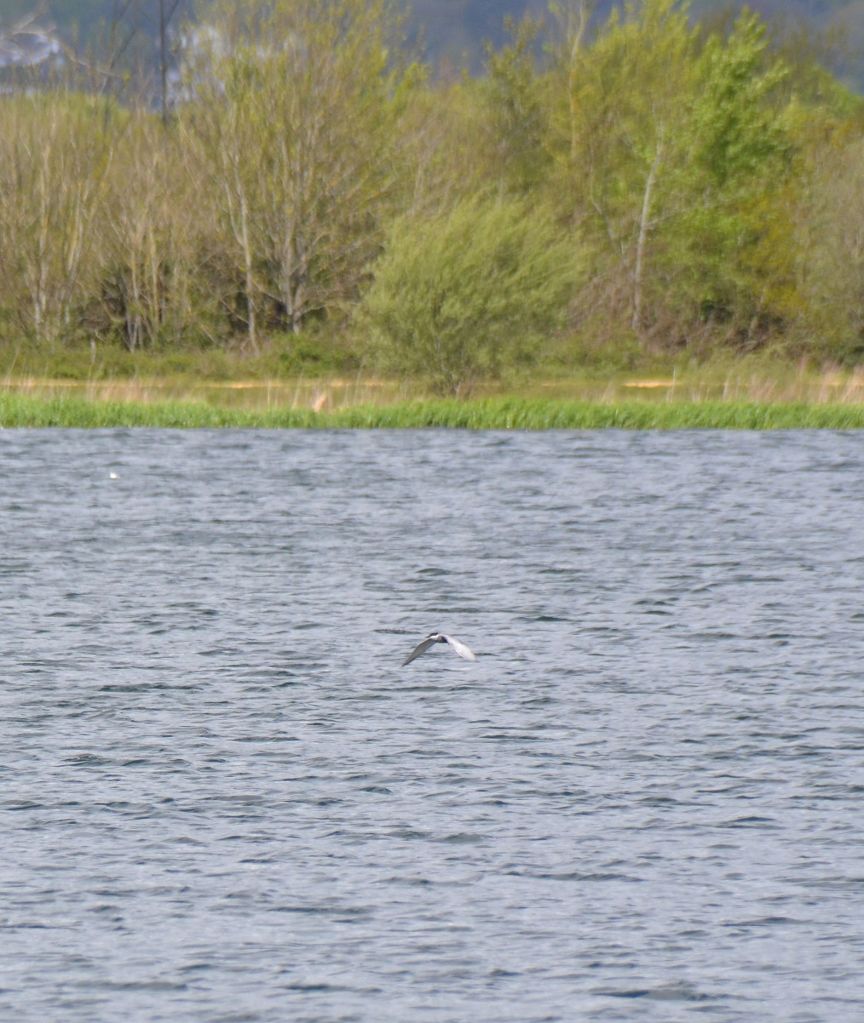British bird list additions within 100 miles of home are usually an agreeable reason for me to hit the road for a day out. So when a Whiskered Tern that had been present for some days at Abbotsbury on the Dorset Fleet relocated to the nearer end of that county I quickly decided to make the tripette. I first experienced this attractive marsh Tern in la Camargue (France) and Coto Donana (Spain) in the spring of 2012, then again on Lake Kerkini in Greek Macedonia in May 2017 (pictured below).
This scarce summer vagrant to the British Isles is one of a group of three species – the others being Black and White-winged Tern – known as the “Marsh Terns” that breed in loose colonies in shallow, wetland habitat such as lakes, rivers and marshes. These feed by dipping down to the water surface to take insects, actually diving for fish much less often. To quote Collins, they differ from the “Sea Terns” in their lazier flight with more banking from side to side, and do not hover and dive like the latter group. Marsh Terns also have slightly shorter and broader wings and a less forked tail. To my mind this all makes for entertaining and alluring viewing.
Longham Lakes (SZ 065982) on the outskirts of Bournemouth is something of a lucky birding location for me. I last came here in October 2019 to observe an American Black Tern (see here). Earlier visits for Hoopoe (Dec 2010) and White-rumped Sandpiper (Dec 2012) were also successful and today was no exception. I arrived mid-morning to find several birders in place who indicated the area in which my quest was active, and I soon picked the Whiskered Tern out by it’s smoky grey appearance on the wing. But it was actually the only Tern of any kind at this site today.
This bird offered superb value over my four hours or so on site through which it foraged for insects on the wing and hawked the water surface widely putting on quite an aerial display. Soon after my getting there it settled on one of a number of buoys out on the far side of the lake. I attempted digi-scoped records and this below was my best effort to show I am not making all this up.
I then learned that a day earlier the Tern had perched on a water level marker much closer in to the shore, further around the lake perimeter from where I was standing (see here). So I headed for that spot, finding several more birders and photographers all waiting hopefully for a repeat performance. The views from there over the next hour were much better (below), but the Tern did not come in closer to settle on the post.
After a sandwich break I returned to stake out the same spot again. The other birders from earlier had moved on, so I set up my shooting stick and as the Tern came and went over another hour I had it all to myself. But still it did not offer the picture opportunity I was seeking and so at some time after 2pm I departed.
In between the dates cited at the start of this post a Whiskered Tern was a first county record for my home county of Oxfordshire, at RSPB Otmoor on 25th April 2014. This occasion was famous in recent local birding history for the grapevine co-ordinator who usually puts out the alerts being on holiday abroad, so in the event only around 14 people got to connect. The record is still the most recent life addition for three of Oxon’s four highest published listers.
When news filtered through to me I met some of those departing Oxon birders on the access road to the reserve who said the bird had flown off north and it was not worth my going on. But I wasn’t told two reliable birders had stayed behind who reported it returning to roost that night. In the days that followed some of our county’s finest cast doubt upon that, but in the OOS Annual bird report for the year it is now acknowledged the later report was correct.
At first light the following morning I was one of rather more than 14 county birders who found the Whiskered Tern had moved on overnight. Though not a matter of great importance to me, I have since felt a slight frustration over allowing myself to be turned around on that occasion rather than taking the decision myself. So today’s experience of a first personal British record goes some way to redressing the balance. My British bird list now stands at 362.



